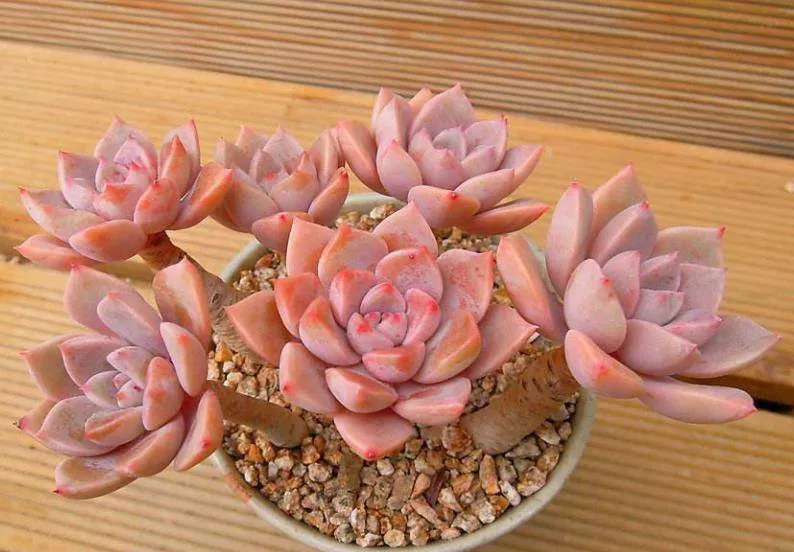Succulents have surged in popularity due to their unique and captivating appearance. These hardy plants are renowned for their ability to thrive in arid environments, making them the perfect choice for both novice and experienced gardeners. However, one common challenge for succulent enthusiasts is understanding the right balance when it comes to watering. How much water do succulents need per week?
Succulent Basics
Before we explore the watering requirements of succulents, it’s crucial to understand the characteristics that set them apart. Succulents are known for their fleshy leaves and stems that store water. This unique adaptation allows them to endure drought-like conditions by storing water for prolonged periods. Understanding these key features is essential for determining how much water succulents truly need.
Assessing Watering Needs
Succulents have adapted to retain moisture, making them efficient at surviving in arid regions. When it comes to watering, less is often more. The frequency and amount of water required by succulents vary based on factors such as the succulent species, the environment, and the time of year.
Understanding Seasonal Variations
Succulent watering needs fluctuate with the seasons. During the active growing season, typically spring and summer, succulents may require more frequent watering. In contrast, during the dormant season, usually fall and winter, succulents require significantly less water.
Succulent Species Variability
It’s essential to consider the specific succulent species you are cultivating. Some succulents, like Aloe and Haworthia, naturally require more water than others. Researching the water preferences of your succulent varieties is crucial.
The Art of Succulent Watering
Now that you have a foundational understanding of succulents and their inherent traits, it’s time to dive into the art of succulent watering. Successful succulent care hinges on providing the right amount of water at the right time. Here are some key principles to keep in mind:
Frequency
One of the most common mistakes made by succulent growers is overwatering. Succulents prefer infrequent but deep watering. Depending on the climate and the season, this may range from once every 1-2 weeks during the growing season to once a month or less during dormancy.
Soil Quality
Using well-draining soil is vital for succulent health. Potting mixes formulated for cacti and succulents are readily available and ensure that water does not accumulate around the roots, preventing rot.
Container Choice
If you’re growing succulents in containers, ensure that they have drainage holes. This allows excess water to escape and minimizes the risk of waterlogged roots.
Watering Technique
When it’s time to water, do so thoroughly. Water the soil until you see excess water draining from the bottom of the pot. Allow the soil to dry out before the next watering. It’s essential to avoid spraying water on the succulent’s leaves, as this can lead to rot.
Dormancy Adjustment
In the dormant season, adjust your watering schedule accordingly. Succulents require much less water during this time. Be especially cautious about overwatering in the winter months, as it can lead to root rot.
Determining Watering Needs
Visual Clues
A common method for assessing when your succulent needs water is to observe the appearance of the leaves. Wrinkled or shriveled leaves are an indicator that your succulent is thirsty and needs hydration. On the other hand, plump, firm leaves are a sign that your succulent is adequately hydrated.
Stick Test
If you’re unsure about when to water your succulent, you can use the “stick test.” Insert a wooden stick or your finger into the soil, down to about an inch. If the stick comes out dry, it’s time to water. If it’s still moist, hold off on watering for a few more days.
Pot Weight
Another practical method is to lift the pot. A dry pot is significantly lighter than a watered one. By getting a feel for the pot’s weight, you can gauge when it’s time to water your succulent.
Understanding Environmental Factors
Environmental conditions play a crucial role in determining how much water succulents need. Here are some factors to consider:
Sunlight
The amount of sunlight your succulent receives directly affects its water requirements. Succulents placed in full sun will generally need more frequent watering than those in partial or filtered light.
Temperature
High temperatures can cause succulents to lose water more rapidly, leading to increased water needs. On the other hand, cold temperatures slow down the plant’s metabolic processes, reducing the need for water.
Humidity
High humidity levels can slow down the rate at which water evaporates from the soil. In humid environments, succulents may require less frequent watering.
Air Circulation
Good air circulation around your succulents can help prevent moisture buildup, which can lead to fungal issues. Adequate airflow is important, especially in regions with high humidity.
Conclusion
Succulent care, particularly in terms of watering, requires a delicate balance that can be challenging for even experienced gardeners. However, understanding the specific water needs of your succulent species and paying attention to environmental factors can help you provide the ideal conditions for these unique plants. By adhering to the principles of infrequent but deep watering, utilizing well-draining soil, and adjusting your watering schedule for seasonal variations, you can maintain healthy and thriving succulents.
Remember that patience and observation are key to successful succulent cultivation. The more you familiarize yourself with your succulents’ individual needs, the better equipped you’ll be to provide them with the perfect amount of water, ensuring they grace your garden with their beauty for years to come. So, as you embark on your succulent journey, remember to embrace the art of succulent watering, allowing these remarkable plants to flourish in your care.


